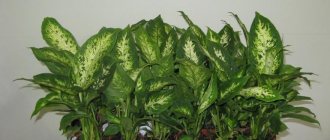Proper care of a flower is of paramount importance, since not only its appearance, but also its general condition depends on it. Caring for gardenia is even more painstaking work, since it is very demanding of the environment.
The gardenia plant is a popular houseplant that dates back to the 18th century. Botanists know about 134 species of gardenias, but the most popular among gardeners are Gardenia jasmine and Gardenia Tahitian. The gardenia flower has a delicate white corolla and can grow up to 1.5 meters in height.
Gardenia grows at home only if all the necessary conditions are present. Homemade hydrangea is much more capricious than wild hydrangea: it is very sensitive to changes in environment and prone to diseases. In our article we will talk about how to care for gardenia, how to create comfortable conditions for its growth and flowering.
Soil for gardenia in a pot
If you decide to plant gardenia at home, then you need to choose the right soil and prepare it for the process of planting the flower.
When choosing soil, you need to pay attention to the following aspects:
Soil type
Gardenia needs acidic soil, so you can mix leaf, coniferous, and turf soil in a 1:1 ratio. It is also necessary to add 1 part of sand and peat soil. In no case should you add lime to the mixture, as this can lead to the death of the flower. If you can’t make soil yourself, purchase soil for azaleas.
pH level
Before planting the plant, you need to check the pH level of the soil. It should be in the range from 4.5 to 5.5.
Planned transplant
The frequency of planned transplantation is usually two years. The new container should be 2 cm wider than the previous one. In order to replant the gardenia painlessly and correctly, you need to handle its root system as carefully as possible, preserving the earthen lump. This is done in early spring before the start of active growing season and the release of buds. During flowering, replanting is categorically not recommended and can only be justified by the threat of death. The flower will not only shed its buds, but may also die. Good drainage must be provided!
How to fertilize gardenia
Fertilizer allows you to replenish a number of useful substances necessary for the growth and development of the flower. If the gardenia is still very young, use mineral or organic fertilizers (such fertilizers must be applied every two weeks). When growing an adult flower, it is best to use fertilizers that do not contain calcium. Gardenias need to be fed with this fertilizer every week. If it happens that the gardenia leaves begin to turn yellow, you can make a weak solution of iron sulfate. It will restore the plant and prevent yellowing of other leaves.
3.Varieties:
3.1. Jasminoid or regal gardenia - Gardenia Jasminoides
An evergreen shrub from 1.5 to 2 m high with abundantly branching, erect stems. The leaves are dark green, up to 10 cm long, thick, glossy, entire, lanceolate. The leaf blades are covered with a network of branched veins. Leaf petioles are short. The flowers are large - reaching a diameter of 8 cm, reminiscent of a rose, and emit a very intense aroma reminiscent of jasmine. Flowering occurs from May to July.
↑ Up,
3.2.Tahitian gardenia - Gardenia taitensis
Tall multi-stemmed shrub, reaching 4 meters in height. The leaves are lanceolate, entire, dark green, arranged in opposite pairs. The leaves reach 15 - 16 cm in length. Leaf veins are often highlighted in a lighter shade. The shoots are thin, flexible, abundantly branched. The flowers are light - white or cream, up to 9 cm in diameter, and have a sweetish aroma.
↑ Up,
3.3.Vietnamese gardenia - Gardenia vietnamensis
Fast-growing, evergreen, multi-stemmed shrubs with thin shoots up to 1 m high. The leaves are oblong, lanceolate, dark green, entire. The flowers are cream-colored, solitary, with narrow, long petals, and have a sweetish aroma that intensifies in the evening and night hours.
↑ Up,
3.4.Gardenia Thunberg - Gardenia thunbergia
Multi-stemmed, dense, evergreen, large-flowered shrub or small flowering tree, height from 1.5 to 4.5 m. Leaves are oblong - oval, lanceolate, glossy, dark green, collected in whorls of 3 - 4. Flowers are showy, cream, large reach a diameter of 8 cm. During the flowering period, the shrub emits a pleasant aroma, which is especially intensified at night and in the evening.
↑ Up,
Features of care
As already mentioned, gardenia is a flower that is very sensitive to environmental changes, so it is very important to follow the following rules:
Avoid temperature changes in the room where this flower grows
Sudden changes in soil and air temperature can greatly harm gardenia, so you need to ensure that it is constant and within acceptable limits.
Create artificial lighting in winter
Gardenia comes from southern countries, so it constantly needs sunlight. In summer there is enough of it, but in winter it is necessary to compensate for its deficiency so that the gardenia does not wither and continues to bloom. This should only be done if the gardenia begins to fade. Artificial lamps can be used for lighting.
Care for your gardenia regularly
Irregular care of your gardenia can cause it to wilt. For this reason, caring for it should be regular, especially in spring and summer, when it begins to bloom with renewed vigor.
Plant diseases
It is not always possible to recreate completely comfortable conditions for indoor flowers, which is why they periodically acquire a number of diseases. And since gardenia is capricious, a small jump in temperature may be enough to make it sick. In order to provide assistance, it is necessary to study the symptoms of each disease in a timely manner.
The buds are falling
There may be several reasons why unopened gardenia flowers fall off:
- Dry microclimate.
- Incorrect ventilation of the room, resulting in drafts.
- Stress from temperature fluctuations.
- Replanting a plant during flowering.
- Transporting the pot to another place.
Yellow stains on leaves
There may also be several prerequisites for a gardenia to change its color:
- Incorrect watering. Some inexperienced gardeners, relying on the preferences of a capricious plant, over-moisten the soil. It is worth considering that the substrate should not be flooded, but only slightly moistened. Also, a mistake can be made in the quality of the water; it should not be hard and cold.
- Unsuitable soil.
- Bad light.
- Insufficient amount of fertilizing.
Weak flowering
In the case of modest flowering or its absence at all, the causes of the disease are similar to those in which the gardenia drops its buds. True, in this case they can also be supplemented by oversaturation of the soil with alkalis.
Faded leaves
Discolored foliage is a symptom characteristic of chlorosis. This disease can be considered chronic for an exotic bush. The disease is caused by a lack of iron compounds in the soil. To maintain vital activity, gardenia should be treated with Ferovit or any other preparation containing iron.
This is interesting: as a preventative measure, you can stick one or more rusty nails into the soil.
Slow growth
Stopping development is a strong argument for a thorough inspection of the plant. Probably, the gardenia is susceptible to insect activity or the microclimate is not arranged correctly. If pests are detected, immediate action should be taken. But it would be useful to reconsider the growing conditions. High humidity coupled with low temperatures has a negative impact on the crop.
Not everyone can take care of exotic gardenia, however, if you do it correctly, there will always be harmony and a magnificent jasmine aroma in your home.
Popular questions and answers
We asked houseplant collector Elizaveta Starostina - she answered the most popular questions from summer residents.
How to choose a gardenia?
When choosing a gardenia, pay attention to the condition of the plant: good turgor of the leaves, their glossy bright color, absence of signs of diseases and pests. Ask the seller to remove the earthen ball from the container - this way you can see how developed and healthy the root system is.
What to do with gardenia after purchase?
The climate at home is completely different than in a greenhouse or flower shop, so it takes time to acclimatize. To begin with, I arrange a quarantine, wash the pot, spray the plant with an insecticide, create greenhouse conditions for it for 2 - 3 days - pour water into a pan, cover the plant with a large plastic bag and place it in a bright, but not sunny place. Then I begin to accustom it to indoor conditions, and after a couple of weeks I transplant the plant into fresh soil.
Why do gardenia leaves turn yellow?
The main reason is chlorosis caused by iron deficiency. This is the result of watering with hard water. I recommend replanting the plant in a new substrate, using only soft water for watering, and maintaining optimal soil acidity. Use complex mineral fertilizer enriched with microelements for feeding. Also, yellowing can be caused by excess water in the root area, which leads to their rotting.
Why do gardenia leaves turn black?
The reasons may vary. The lower leaves begin to turn black due to excess watering and lack of air in the soil. Adjust watering and loosen the soil. Black leaves in the crown may be the result of a fungal disease. Therefore, regularly spray your plants with biofungicides.
Why do gardenia leaves dry out?
The leaves wither and dry out with infrequent watering and low air humidity. Adjust watering so that the soil is always slightly moist; spray the plants with warm, soft water 2 times a day.
Why do gardenia buds fall off?
There are several reasons: dry air in the room, lack or excess of moisture, poor lighting or a sharp temperature change. Adjust watering, do not forget to humidify the air. If necessary, add additional light to the plant. From the moment the buds appear, do not change the place of cultivation, do not turn the other side towards the light and protect from drafts and sudden changes in temperature.
Sources
- Gardenia // Great Soviet Encyclopedia [in 30 volumes] / ch. ed. A.M. Prokhorov. – 3rd ed. – M.: Soviet Encyclopedia, 1969 - 1978
- Doronina N.V. Healing powers of indoor plants // Ridero, 2019
- State catalog of pesticides and agrochemicals approved for use on the territory of the Russian Federation as of July 6, 2022 // Ministry of Agriculture of the Russian Federation https://mcx.gov.ru/ministry/departments/departament-rastenievodstva-mekhanizatsii-khimizatsii-i -zashchity-rasteniy/industry-information/info-gosudarstvennaya-usluga-po-gosudarstvennoy-registratsii-pestitsidov-i-agrokhimikatov/
Propagation by cuttings
At the beginning of spring, flower growers plant gardenias. The cutting is obtained from the top of the plant, which is cut to 10 cm. You should choose a sharp knife. Using such a tool, a smooth cut will be obtained. The leaves are carefully removed, you just need to leave two pieces at the very top. Before planting, the cuttings are immersed in a weak solution of potassium permanganate. You can use a growth stimulator for these purposes, in which the shoot is left for 5 hours. The cuttings are planted in the soil and covered with film or a jar. In a month, new shoots will appear. If the cuttings are well rooted and begin to grow actively, they are transplanted into containers for permanent cultivation.
How to care after purchase?
You should not immediately replant the flower after purchasing it; it needs to get used to the new living conditions. It is better to immediately place the plant in the place where it will live.
Why is a transplant done?
The root system of the plant grows quickly, therefore, it is transplanted using the transshipment method. Adult pride needs to be transshipped every 2 years.
- It is important to use soil that has plenty of nutrients. You can buy soil for azaleas, or any other soil, the main thing is that it does not retain water.
- When replanting, be sure to place a drainage layer on the bottom of the pot.
- Gardenias are replanted in the spring and if it blooms, you will have to postpone the replanting until the flowering is over. If you replant it during flowering, the plant will drop all its buds.
As for propagation, it is difficult for gardenia to propagate at home. The plant is propagated by cuttings, which are taken in the spring during formative pruning. It is better to cut cuttings in winter, but it is also possible in summer, but it is important to do this before flowering.
Cuttings are taken from an adult plant with semi-woody shoots. Cuttings for propagation are cut at least 10 cm long. Before the cuttings are placed in the ground, they are treated with special substances that stimulate the formation of the root system.
Preparatory measures
Step by step procedure:
- Water the soil generously.
- Carefully remove the plant from the pot along with the earthen lump.
- Place in a bowl of warm water for about an hour, so that the substrate is as far behind the roots as possible and the plant is saturated with moisture.
All manipulations must be carried out with extreme caution; gardenia is a very delicate flower with a fragile root system that perceives any, even minor, impact as severe stress.
The container for planting should be small in diameter, two to three centimeters larger than the previous one. You should not choose a pot that is too deep, as this can lead to stagnation of water. Preference should be given to a ceramic or plastic pot with mandatory drainage holes. Before pouring the substrate into it, the container must be treated with a solution of potassium permanganate.
Transfer
Replanting is done every few years when the plant outgrows the existing container. At the very beginning after purchase, select and prepare an appropriate container with high-quality drainage. The pot should be no more than a few centimeters larger than the original container. It is important to make sure it is clean and has wide holes in the bottom for drainage.
For replanting, choose a high-quality, well-drained medium designed specifically for plants that prefer acidic soil. Avoid any soil that contains lime.
You can prepare the soil yourself using peat moss, cottonseed meal, or other material that slightly acidifies the compost. Place a sufficient amount of growing medium in the bottom of the container.
When the container for planting is ready, start changing the pot. Remove the gardenia root mass from its current container and inspect the roots. At this stage, be sure to trim off any dead, diseased or broken ones. Place the roots in the prepared pot on top of the previously poured soil. At this stage, the position of the flower is adjusted; the root collar should be underground.
Fill the space around the root mass with soil, gently compacting it. This is necessary to remove air pockets formed in the soil.
Immediately after transplanting, water the plant, place the pot on a tray and wait until the excess moisture drains.
Place the container with the gardenia where it will receive enough bright, diffused light for at least half a day. You can keep the flower on a sunny window in winter, but put it indoors at night. It is impossible for the flower foliage to come into contact with the glass, this leads to hypothermia, and as a result, problems.
For watering, it is advisable to use distilled water or rainwater at least for the first time after transplantation, since tap water can increase the pH around the roots. Although gardenia is drought-resistant, it does not like fluctuations in humidity levels, which often causes bud drop. You can fertilize only a month after transplantation, since at this moment the plant is under stress, and the additional load is harmful to it.
The pot is changed again after the next flowering, and also when the roots begin to grow on the surface of the soil or break through the holes in the bottom of the container.
Replanting after purchase
There is no need to rush to replant the plant immediately after purchase, since the delicate buds may fall off. Wait three to four weeks, and then place the gardenia in another pot with suitable soil.
- Place small pebbles or expanded clay at the bottom of the container, and then fill it with nutritious soil for azaleas or gardenias.
- Remove the plant from the store pot along with a lump of soil and place it in a new container.
After a month and a half, you can feed the gardenia with fertilizers for the first time.
All the secrets of transplanting this beautiful plant are in this video:
Pot
The volume of the container depends on the size of the root system: the pot should be slightly larger. There must be a passage hole at the bottom, a layer of drainage is laid
As for the material of the product, both plastic and ceramic pots are suitable for gardenia. A plastic container is less stable, but it conveniently provides moisture from the tray.
Botanical description
Gardenia (lat. Gardenia) belongs to the Rubiaceae family and includes approximately 250 species. The plant lives in the forests of the subtropical parts of China and Japan. The genus was named after the gardener Garden A., who lived in America in the 18th century. Gardenias are evergreen shrubs and small trees. Strong shoots are either pubescent or bare. The leaves are arranged oppositely, have stipules, and are glossy. The flowers are either collected in corymbs or grow singly, have a pleasant smell, are yellow and white, apical or axillary. gardenia jasmine is grown indoors The plant tolerates pruning normally. Despite the fact that you can quite easily form the crown of a plant, it is very whimsical: poor tolerance to temperature changes and excess moisture in the substrate.
Watering
Gardenia soil should always be slightly moist. Both waterlogging and drying out of the soil are dangerous for it. We water the plant over the entire surface of the soil, avoiding getting it on the cuttings. Half an hour after watering, drain the excess water from the pan.
For irrigation, it is recommended to use filtered and settled water. You need to add 2 grains of citric acid or just lemon juice to it at the rate of 2-3 drops per liter of water. This measure will soften the water and make it slightly sour, which gardenia loves very much.
Possible problems during cultivation
Drops buds
The owner of a gardenia is always waiting for the buds to open, but if this does not happen and they fall off, this is bad. The reasons are as follows:
- dry air in the room;
- the flower is in a draft;
- there are temperature changes;
- the flower pot is constantly disturbed and carried from place to place;
- The transfer was not carried out on time.
The leaves are turning yellow
The most common problem with gardenia. Yellowing of the leaves can occur if the flower is not cared for properly. The reasons may be:
- incorrect watering regime;
- incorrectly selected soil;
- chlorosis that occurs when the soil becomes alkalized;
- lack of light;
- lack of nutrients.
Leaves turn black
Drying of gardenia leaves is common. If a small number of leaves dry out, then there is no need to worry - this is a natural process. But if most of the foliage is affected, you need to pay attention to it.
The reasons for blackening of leaves are as follows:
- flower bay;
- frostbite or being in a draft;
- presence of pests.
Healing properties
In folk medicine, the fruits and roots of indoor gardenia are often used - a decoction of them is an antipyretic, anti-inflammatory and hemostatic agent. It is also taken for skin diseases, stomatitis, jaundice and mastitis, to treat ulcers in the mouth and lips, hepatitis, influenza, nosebleeds, nephritis and dysentery. Extracts of their fruits reduce blood pressure.
Gardenia jasmine contains substances that are choleretic. Small fruits help with fever and pulmonary diseases, while large ones are crushed and applied to burns, bruises, tumors and various types of injuries.











